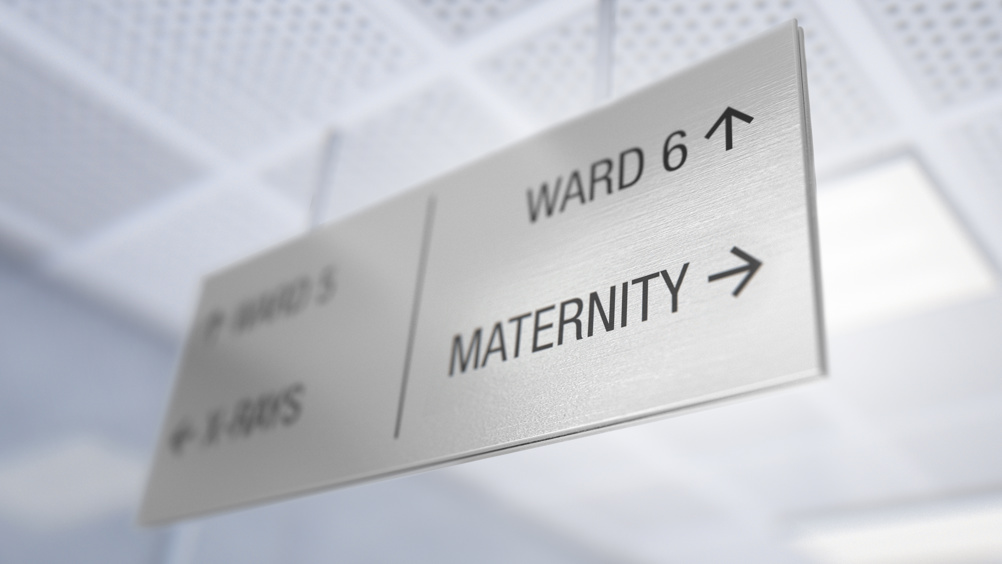Angerud K, Annerback E-M, Tyden T, Boddeti S, Kristiansson P. Adverse childhood experiences and depressive symptomatology among pregnant women. Acta Obstetricia et Gynecologica Scandinavica. 2018; 97:701-708
Bellis MA, Hughes K, Leckenby N, Perkins C, Lowey H. National household survey of adverse childhood experiences and their relationship with resilience to health-harming behaviors in England.
BMC Med.. 2014; 12
https://doi.org/10.1186/1741-7015-12-72
Bethell CD, Carle A, Hudziak J, Gombojav N, Powers K, Wade R, Braveman P. Methods to assess adverse childhood experiences of children and families: towards approaches to promote child well-being in policy and practice. Academic Pediatrics.. 2017; 17:S51-S69
Brandon M, Sidebotham P, Belderson P, Cleaver H, Dickens J, Garstang J, Harris J, Sorensen P, Wate R. Complexity and challenge: a triennial analysis of Serious Case Reviews 2014–2017.: Department of Education; 2020
Bressan V, Bagnasco A, Aleo G, Timmins F, Barisone M, Bianchi M, Pellegrini R, Sasso L. Mixed methods research in nursing – a critical review. Journal of Clinical Nursing.. 2016; 26:2878-2890
Bright MA, Knapp C, Hinojosa MS, Alford S, Bonner B. The comorbidity of physical, mental, and developmental conditions associated with childhood adversity: a population based study. Maternal and Child Health Journal.. 2016; 20:843-853
Brown SM, Shillington AM. Childhood adversity and the risk of substance use and delinquency: the role of protective adult relationships. Child Abuse and Neglect.. 2017; 63:211-221
Fabreques S, Pare MH. Appraising the quality of mixed methods research in nursing: a qualitative case study of nurse researchers' views.
Nursing Inquiry.. 2018; 25
10.1111/nin.12247
Felitti VJ, Anda RF, Nordenberg D, Williamson DF, Spitz AM, Edwards V, Koss MP, Marks JS. Relationship of childhood abuse and household dysfunction to many of the leading causes of death in adults: the adverse childhood experiences (ACE) study. American Journal of Preventative Medicine.. 1998; 14:245-258
Finkelhor D. Screening for adverse childhood experiences (ACEs): cautions and suggestions. Child Abuse and Neglect.. 2018; 85:174-179
Flanagan T, Alabaster A, McCaw B, Stoller N, Watson C, Young-Wolff KC. Feasibility and acceptability of screening for adverse childhood experiences in prenatal care. Journal of Womens Health.. 2018; 27:(7)903-911
Hughes K, Bellis MA, Hardcastle KA, Sethis D, Butchart A, Mikton C, Jones L, Dunne MP. The effect of multiple adverse childhood experiences on health: a systematic review and meta-analysis. Lancet: Public Health.. 2017; 2:e356-e366
Johnson K, Woodward A, Swenson S, Weis C, Gunderson M, Deling M, Cristiani V, Lynch B. Parents' adverse childhood experiences and mental health screening using home visiting programs: a pilot study. Public Health Nursing.. 2017; 34:522-530
Kan K, Gupta R, Davis MM, Heard-Garris N, Garfield C. Adverse experiences and special health care needs among children. Maternal and Child Health Journal.. 2020; 24:552-560
Marryat L, Frank J. Factors associated with adverse childhood experiences in Scottish children: a prospective cohort study. British Medical Journal Paediatrics Open.. 2019; 3
Mersky JP, Lee C-TP, Gilbert RM. Client and provider discomfort with an adverse childhood experiences survey. American Journal of Preventive Medicine.. 2019; 57:(2)e51-e58
Better Births Improving outcomes of ma-ternity services in England. A five year forward view for maternity care.: NHSE; 2016
Nowell LS, Norris JM, White DE, Moules NJ. Thematic analysis: striving to meet the trustworthiness criteria. In-ternational Journal of Qualitative Methods.. 2017; 16:1-13
Nguyen MW, Heberlein E, Covington-Kolb S, Gerstner AM, Gaspard A, Eichelberger KY. Assessing adverse childhood experiences during pregnancy: evidence toward a best practice. American Journal of Perinatology Reports.. 2019; 9:(1)e54-e59
Oh DL, Jerman P, Marques SS, Koita K, Boparai SKP, Burke Harris N, Bucci M. Systematic review of pediatric health outcomes associated with childhood adversity. BMC Pedi-atrics.. 2018; 18
Olander EK, Darwin ZJ, Atkinson L, Smith DM, Gardner B. Beyond the “teachable moment” – a conceptual analy-sis of women's perinatal behaviour change.
Women and Birth.. 2016; 29:e67-e71
https://doi.org/10.1016/j.wombi.2015.11.005
Olson JM. Integrative review of pregnancy health risks and outcomes associated with Adverse Childhood Experiences. Journal of Obstetric, Gynecologic and Neonatal nursing.. 2018; 47:(6)783-794
Panisch LS, LaBrenz CA, Lawson J, Gerlach B, Tennant PS, Nulu S, Faulkner M. Relationships between adverse child-hood experiences and protective factors among parents at-risk for child maltreatment.
Children and Youth Services Review.. 2020; 110
https://doi.org/10.1016/j.childyouth.2020.104816
Pechtel P, Pizzagalli DA. Effects of early life stress on cogni-tive and affective function: an integrated review of human literature. Psychopharmacology.. 2011; 214:55-70
Racine NM, Madigan SL, Plamondon AR Differential as-sociations of adverse childhood experiences on maternal health. American Journal of Preventative Medicine.. 2018; 54:368-375
Romanowicz M. Adverse childhood experiences and father-hood: a systematic review of published reports.
Jour-nal of the American Academy of Child and Adolescent Psychiatry.. 2019; 58
https://doi.org/10.1016/j.jaac.2019.07.783
Rariden C, SmithBattle L, Hye Yoo J, Cibulka N, Loman D. Screening for Adverse Childhood Experiences: Litera-ture Review and Practice Implications.
The Journal for Nurse Practitioners.. 2020;
https://doi.org/10.1016/j.nurpra.2020.08.002
Salmon D, Baird KM, White P. Women's views and experi-ences of antenatal enquiry for domestic abuse during pregnancy. Health Expectations.. 2015; 18:867-878
Schofield TJ, Lee RD, Merrick MT. Safe, stable, nurturing relationships as a moderator of intergenerational continuity of child maltreatment, a meta-analysis. Journal of Adoles-cent Health.. 2013; 53:S32-S38
Sidebotham P, Brandon M, Bailey S, Belderson P, Dodsworth J, Garstand J, Harrison E, Retzer A, Sorenson P. Pathways to harm, pathways to pro-tection: a triennial analysis of serious case reviews 2011 to 2014.: Department for Education; 2016
Skjothaug T, Smith L, Wentzel-Larsen T, Moe V. Prospective fathers' adverse childhood experiences, pregnancy related anxiety and depression during pregnancy. Infant Mental Health Journal.. 2015; 36:104-113
Smith MV, Gotman N, Yonkers KA. Early childhood adversity and pregnancy outcomes. Maternal and Child Health Jour-nal.. 2016; 20:(04)790-798


